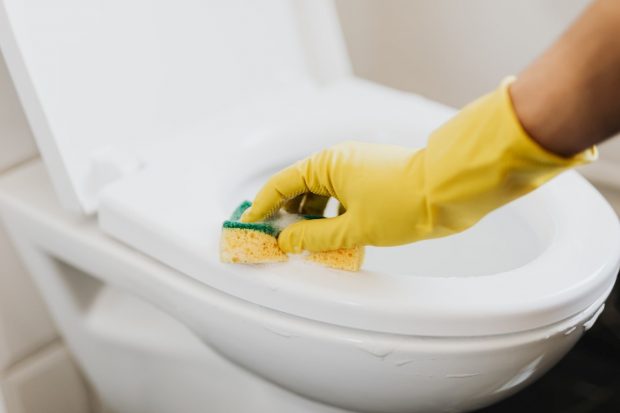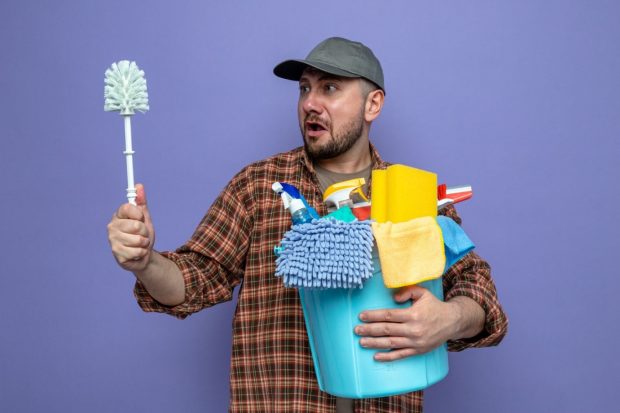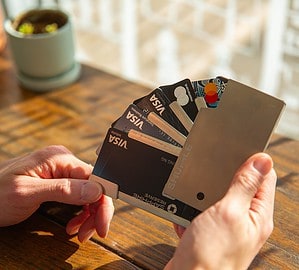A clogged toilet is not something you want to deal with. It’s unpleasant, dirty, and can do a lot of damage. While this is a rarity for flush toilets, it’s best to do everything you can to avoid this situation.
Fortunately, there are plenty of preventative measures you can take to ensure that your toilet will be limescale-free and not in danger of clogging. Check out the top 6 things you should do to prevent your toilet from clogging and to deal with possible clogging.
Be careful what you flush
Toilets most often clog as a result of throwing things into it that shouldn’t be there. Therefore, the best way to prevent clogging is to be careful. Also, the rest of the household needs to know that the toilet is not a wastebasket – you can’t throw everything into it!
Even guests should be aware of the dangers of a clogged toilet. However, this can be a bit embarrassing. It’s hard to give your guests instructions on how to use the toilet, and when an “accident” happens, they may be too embarrassed to admit that they threw something inappropriate in there.
To avoid embarrassment and shame, why not hang a sign? Just to remind guests and household members not to throw sanitary pads, cotton balls, wet wipes or dental floss down the toilet. All of these should be disposed of in the trash.
Finally, if you are constantly bothered by the problem of a clogged toilet, try changing the toilet paper you use. The multi-ply ones can sometimes cause clogged toilets if you use too much in one flush.

Regular cleaning
Regular cleaning and care of your toilet also plays a part in preventing clogging. To make sure it’s flushing at full force (and therefore less likely to clog), wash the inside of the toilet under the edge of the toilet. That’s where the holes that water flows through are located and can get clogged.
From time to time, it’s also a good idea to clean the inside of the cistern, if it’s easily accessible. This is also where clogging problems can begin if too much algae builds up there. Using cistern tablets helps to prevent algae build-up, but it is also a good idea to empty the cistern occasionally (for example once a year) and clean it well.
Keep your toilet limescale-free
Limescale is a major cause of unsightly brown stains in the toilet and can contribute to blockages by reducing the free flow of material. All water, but especially so-called “hard water”, contains minerals such as calcium, magnesium and iron that tend to stick to and store on the walls of pipes and toilet bowls. Scale forms when water evaporates and leaves these minerals behind. The residue attracts dirt and bacteria, building up on itself, layer by layer.
Not only is scale unsightly and unsanitary, but it can also cause pipes to shrink, resulting in potential blockages. The extent of the problem depends on the hardness of the water where you live. However, even in areas with relatively soft water, descaling can be beneficial. Where the water is hard, it is a must.
You can prevent limescale build-up by constantly using toilet and flush blocks. These are very easy to put in place and maintain. Flush blocks are particularly effective against limescale build up both there and in the holes where the water flows out, but also in the toilet bowl.
Flush properly!
Flushing in a toilet works by releasing a large amount of water at one time and thus taking the material in the bowl with it, pushing it safely out through the pipe underneath. If there is not enough water, this process may not happen properly, causing some of the material to get stuck. Concern for the environment has led to less use of water in toilets as well. However, it is important to know that installing water-efficient fixtures, can cause toilets to clog.
Early intervention
If something falls into your toilet, have no inhibitions – reach for it! It may sound scary, but a few seconds of unpleasantness can save you the trouble. When your toothbrush or brush goes out of sight in the toilet bowl, trouble can begin. Always keep a plunger handy! It’s a good idea to have a plunger in every bathroom. Use it as soon as you realize it might be clogged or if something accidentally falls into it. A quick suction should unclog the toilet and get the job done.
Don’t flush the toilet when there’s a problem! It’s very tempting – to try using the flush again to unblock the toilet. However, the water – instead of flowing – rises to the top. However, it’s not tragic until the contents flow out of the toilet. At the very least, wait for the water level to drop to a normal level before you try again. However, it’s best to use a plunger and fix the problem right away.
When to seek professional help?
If the plunger isn’t coping and your toilet is constantly blocked, it may be time to call a local plumber – and the sooner, the better. A clogged toilet is not only unsanitary, but it also puts you and your neighbors at risk of flooding.
The dangers of a blocked toilet.
If a toilet overflows significantly, it can damage floors, travel to the rest of the house, and even to other levels, rooms or apartments. More often, a clogged toilet will simply make a mess, smell bad, and cause you trouble and expense. A timely intervention by a professional can save you from the problem.




